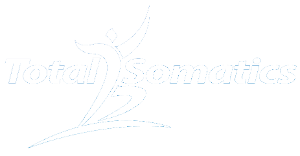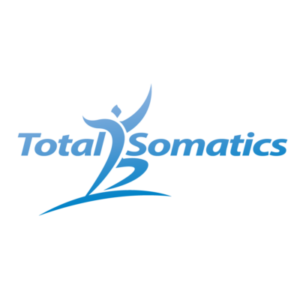The Power of Somatics with Stress, Anxiety & Pain Relief
During the last week I have had a lot of emails regarding my recent blogs discussing emotion and back pain. The questions and queries have come from people who suffer with anxiety, stress and depression. Also many partners of depressed/anxious loved ones have reached out to me. The common thread with their questions links back to muscular pain and tightness associated with dis-empowering beliefs and overwhelming feelings.
In today’s blog I am going to discuss with you how Somatics is more than a movement practice. When we understand why the small, delicate and subtle movements create massive shifts and changes in our muscles compared to elaborate movements and stretches; you’ll see how and why mindful somatic movement is a popular mind and body tool for physical, emotional and mental health.
Depression and Anxiety
There are many biological and environmental causes for depression and anxiety. What we all know is that it is debilitating and affects the whole person or soma. The word depression comes from the Latin “deprimo” which means “to press down” or “to press under.” As a Somatics educator who works with clients on a psychosocial movement level, this definition is apt. Whatever the cause for depression and anxiety, one thing is guaranteed, the emotions become deeply held, unresolved feelings of trauma. They push down or suppress/repress their emotions as a way to deal with their issues. However this is not a great long term solution. As we learned from my previous blog about repressed emotions (CLICK HERE TO READ), at some point these feelings have to reappear. When they do, they can be even more intense because our emotional resilience has been lowered from other trials and worries.
Depression doesn’t depress the mind, rather the body. How? Surely depression is created from within the mind/brain you may ask. It is, however the sensations and lethargy we feel with depression for instance are translated into our body, not our mind. As a result of anxiety and depression, a person will withdraw and become less active, thus limiting their movement. As a result, withdrawing from the world and taking on the subconscious reflex posture (created in the brainstem) which is associated with fear and anxiety. As a result of subconscious stress postures occurring, a person will find their neuromuscular system begins to tighten, creating symptoms such as headaches, neck pain, insomnia, exhaustion, constipation and low libido. The reason for these symptoms stem from the level of tightness, tension and contraction within the muscles created by the central nervous system. The actions of the digestive and reproductive system reduce because in a stressful situation, the last thing you want to do is eat and have sex. Instead you would either flee or fight the situation. When I educate clients in person, online or via skype consultations I always explain to them that their current level of muscular tension is a reflection of their nervous system. If their nervous system is hyper vigilant, anxious, depressed or ‘wired’, their muscles will tighten subconsciously in response, creating a very tight body. Often an anxious, stressed, depressed, traumatised person will have very little movement. The same characteristics can be seen with anxious individuals. For instance their upper body and head are stiff and solid as they walk, their rib cage is rigid - creating shallow breathing and neck/shoulder pain. They walk with very little rhythm and flow through their hips, neck, shoulders and head. This stiffness creates rigidity and a lack of shock absorbency within their joints, creating musculoskeletal issues.
Movement and Mindfulness
Over the years in my clinical practice I have seen clients with a variety of muscular aches and pains. There is a common link with each of them and it is to do with the level of pressure they have in their life. Many clients intellectually know why their muscles have seized up, however they still have pain and find it a challenge to release chronically tight muscles. Many clients have discovered that Stretching does not release chronically tight muscles. To Somatic educators and people who practise somatics, this is no surprise. Stretching will not release subcortical or subconscious muscle contractions, created by stress responses.

The power and role of Somatics is to improve our own internal awareness to how we feel and sense throughout the day. Many people live a very high pressured life and often will ‘live in their heads.” They can reason and understand their body, health and well being on an intellectual scale, however when they are encouraged to notice certain sensations from a somatic educator, they may often find it challenging to actually notice body sensations from their neck down. In order to deal with stress, they have pushed down sensory awareness of their body and a disconnect between the mind and body occurs. This is an instinctive stress response which has been designed to protect us during short term stress. However to continually live in a state of stress which includes a mind and body disconnect is detrimental to our physical, emotional and mental health.
As you know from my previous blogs, your nervous system controls the level of muscle tension you hold. So if you are extremely stressed or under pressure to finish a work project by a certain date for instance, your nervous system will switch up a gear and create the ’fight or flight’ stress response. If you find yourself trapped in a very rigid body with chronically tight muscles, no amount of stretching, twisting, or manipulation will release the subconscious control your brain has over your muscles.
By incorporating specific mindfulness techniques with somatic movement, which is thoroughly covered in The Total Somatics Approach to Health & Wellness Online Program at www.TotalSomatics.com, you learn how to self regulate and self correct. When control and knowledge is handed back to you, you feel empowered and educated to reduce stress or high pressure related health issues. The dis-empowering belief of needing to be ‘fixed’ by someone else is no longer considered. When you experience first hand the power of your brain involved with somatic movement, you see why Somatics is becoming an extremely popular mind and body practise around the world. With a 3 step process used within somatic movement, we reset the muscle length by involving the communication network between your brain and muscles. This cannot be achieved with stretching because stretching is a spinal reflex action, whereas the 3 step practise in somatic movement known as PANDICULATION is a cortical or brain training process. Pandiculation is a small, slow and subtle movement process which will release the tension held within the belly of the muscles, something stretching cannot achieve. Switching your mindset to learn to work smarter, not harder with your body can be a challenge. However because we are working intelligently with your muscles by involving your brain, we realise we are changing our neural landscape to create better muscle memory. I often ask clients the following questions, "When you are 85 years old, what would you like to be able to do? Distort your body, strain your tendons, ligament and joints with stretching or be able to move freely and enjoy the activities which bring you fulfillment with pandiculation?" How would you answer?
When we feel fulfilled, we also have an improved state of mental and physical health. Surely learning how to improve muscle memory and take control of the stress response which affects your muscles is a skill you would like to learn for your current and future health.
The Total Somatics Approach to Health & Wellness Online Program will guide you through a layered learning approach to Somatic Movement, Mindset and Mindfulness. Within the comfort of your own home, at a pace that suits you and a time convenient to your time zone and lifestyle, you can learn skills which can be applied in different situations throughout your day.
During your time online, I am available for questions and queries. So please don’t hesitate to ask, I am here for you.
To learn more about Somatics, DOWNLOAD MY FREE EBOOK BY CLICKING HERE.
I look forward to teaching you these fantastic skills.
Take care,
Heidi Hadley xx
www.TotalSomatics.com













